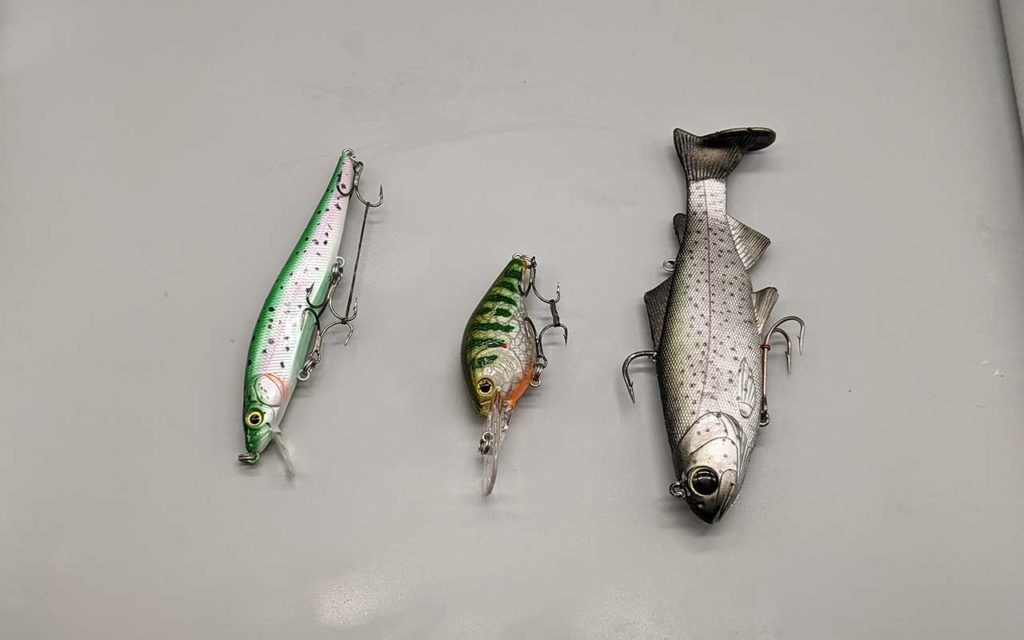Crankbaits Defined

There is a good amount of confusion on what defines a crankbait vs a jerkbait vs a swimbait. In a series of posts we hope to help clear up this confusion. In this article we will talk about how you can determine which is which in crankbaits defined.
If you live in Europe you may call a crankbait a wobbler. If you’re over the age of 60 you probably call it a plug.. There are several sub categories the lure can be broken down into. Before we do that, lets look at how you would recognize this lure.
A crank bait is a lure that is consistently lured in after you cast. The term cranking the reel or continually reeling, helped define this lure. Where as a jerkbait, or swimbait you would stop reeling and twitch the lure to attract fish. The physical attributes that define this lure can contradict each other. So we will start first with the motion and then move onto physical characteristics. There is three different categories of motion that we put the the crankbait into.
Shallow Diving or Floating
Shallow Diving also known as floating crankbaits sink to a few feet below the water. As you reel in the lure maintains that shallow depth. If you stop reeling the lure floats to the top of the water.
Suspending
A suspending crankbait will move to a specific depth as you reel in the lure. If you stop reeling in the lure, will stay at that depth. When fishing a suspending lure it is recommended to stop reeling sometimes to attract bites.
Deep Diving, Sinking, and Countdown
Deep diving crankbait’s sink while they are not being reeled in. While you reel in the lure it will stay at a consistent depth. Most of these types of lures are designed to sink to a specific depth and then sink a lot slower. The name countdown come from the typical sink time of on foot per second. So you can count to 7 and the lure will sink to 7 feet.
Physical Characteristics
A crankbait was defined as a hard body lure that is short, fat, and has a bill on the front. For awhile any lure that had a lip or bill was called a crankbait. Then the RattleTrap was invented which was a lipless crankbait. Now most people call the lipless version of the lure a trap.
Diving
Generally when it comes to diving depth a smaller lip will make a lure stay shallow. If you want a deeper depth you need a longer lip with a greater downward angle. Typically lipless baits stay shallow. Although some new lipless baits are designed for deep diving.
Square Bill
Square bill lures are usually designed for shallow water. When a square bill hits a piece of debris in the water it is more likely to catch and bounce off. If you’re fishing in cover a square bill is recommended.
Round Bill
Round bill lures are typically designed for deeper water. When a round bill hit a log it turns side ways and runs the length of the log. This can cause you to have more snags. Round bill lures are recommended for open water.
Lipless
The lipless lure is typically used in colder months. The tighter wobble of the lure is much less aggressive then the wider lipped lures. Lipless lures will have a rattle built into them to help attract fish. The first lipless crankbait was called a rattle trap. Named after the inventors car.
Wobble
The main body of the lure has a lot to do with it’s wobble. The flatter the sides the less wobble. A rounder side is going to have a greater wobble. You want more of an aggressive wobble in the warmer months of the year.
We hope you enjoyed reading crankbaits defined. If you have any questions or corrections please email us at [email protected]